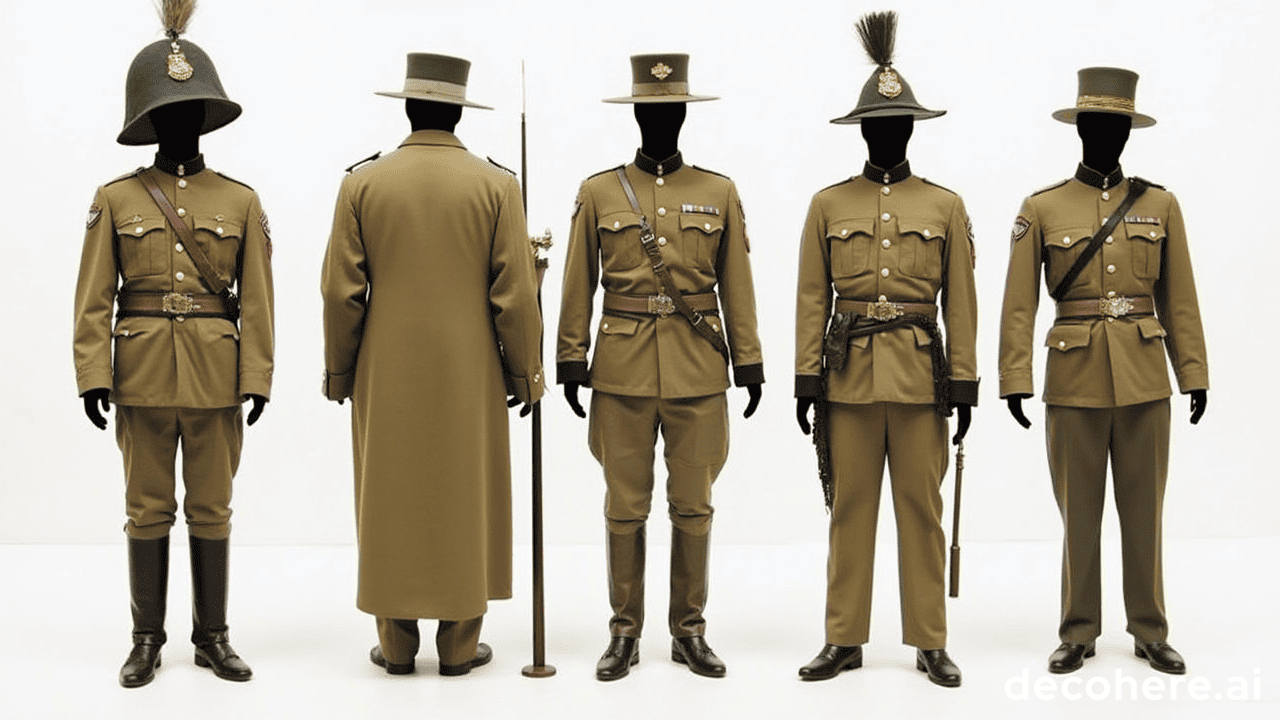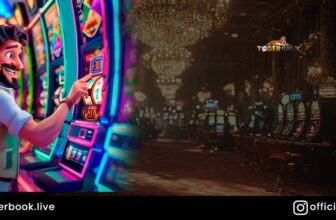
The Victorian military uniform is way more than just clothes it’s an illusion of the British Empire’s influence, prestige, and military might during the 19th century. The uniforms are fabulous with prominent scarlet coats, elaborate insignias, and helmets that speak volumes from another time. Collectors, historians, and reenactors have these uniforms today to relive history, appreciate their craftsmanship, and honor military heritage. Whether it is the Boer War reenactment uniforms or Victorian cavalry uniforms, each piece tells a story of an era that forever shaped the British Empire’s identity.
- Historical Background of Victorian Military Uniforms
It coincided with a period of rapid expansion for the British Empire. British colonial uniforms played a very critical role in establishing British authority across its territories. When the empire stretched into Asia, Africa, and beyond, uniforms had to evolve to accommodate varied climates and military challenges. Although initially designed for grandeur, Victorian military uniforms slowly trended towards practicality, while still being extremely striking.
The Victorian army gear is characterized by elaborate designs and European military influences that show Britain’s supremacy in the military. This military dress continues to appeal to collectors and military historians.
- Main Characteristics of Victorian Military Uniforms
Victorian military uniforms were generally characterized by:
Scarlet Coats: They were known as “Redcoats,” which was the bright scarlet color meant to intimidate enemies and make soldiers visible on the battlefield.
Helmets and Headgear: The British soldier was characterized by iconic helmets such as those for tropical climates, called the Pith helmet, and ceremonial functions, known as the Home Service helmet.
Brass Buttons and Badges: Some of these accouterments had the British crown and told the rank and regiment.
Sashes and Epaulettes: These were used mainly for officers and represented authority as well as different rankings in the military line.
- Victorian Cavalry Uniforms
The Victorian cavalry uniforms were a representation of British gallantry. Cavalry officers wore elaborate uniforms with braids and distinct insignias to show rank. The clothing consisted of:
- High-collared jackets with gold or silver trim.
- Riding boots and distinctive pants, often in dark colors for a sharp contrast with the bright upper garments.
- Plumed helmets are designed to be both intimidating and ceremonial.
Cavalry uniforms showcased the grandeur and sophistication of British cavalry regiments, which makes them very popular among reenactors nowadays.
- Victorian Officer Uniforms
Victorian officer uniforms were considered prestige, and these were mostly tailored from finer fabrics such as wool or cashmere with gold or silver embroidery. Officer attire includes:
- Specialized insignias for rank and regiment identification.
- Sashes and medals that marked military achievement and years of service.
- Functional headgear by rank, such as bearskin hats or odd helmet shapes.
Officer uniforms with precise details make them highly desirable collectibles, given the artistic and symbolic value that each item carries.
- British Colonial Uniforms
When British expansion required military orders to adjust their suits to conditions varying across regions, they also provided the so-called civilian-inspired British colonial ones, distinguished by the following:
- Neutral colors like khaki, which became fashionable to blend with many terrains.
- Practical headgear, specifically the Pith helmet, that kept the sun out.
Colonial uniforms varied according to region. There were differences in India, Africa, and the Middle East which showed that the Empire could be adaptable and resourceful.
- Boer War Reenactment Uniforms
The Boer War, 1899–1902, marked the point of transition for British military wear, with functional attire. Reenactors interested in Boer War uniforms typically want:
- Khaki uniform to camouflage against the South African terrain.
- Utility belts and suspenders designed to carry ammunition and other vital needs..
- A wide-brimmed hat to shield the soldier from direct exposure to African sunlight.
These reenactment uniforms were made to reflect a true-to-life representation of historical authenticity, where enthusiasts can undertake the life of Victorian soldiers in actual battle conditions.
- Victorian Infantry Uniforms
The archetypal Victorian infantry uniform would be practical and clear for identification in combat. Standard features included:
- Scarlet tunics with brass buttons, so impressive and easily identifiable in combat.
- Dark trousers with sturdy boots for long marches.
- Domestic and Ceremonial Variations.
- There is the Home Service helmet, for example, which was worn for domestic and ceremonial duties.
Victorian infantry dress was practical, of course, but it was also iconic, representing British resilience and military discipline.
- Victorian Military Reenactment Gear
For the reenactor, Victorian military reenactment gear offers an opportunity to get inside history. Think:
- Recreations of uniforms made accurate to the original in both material and style.
- Accessories including belts, canteens, and holsters for weapons.
- Badges and insignia that replicate the original designs, rank, and regiment.
Acquiring good quality reproduction equipment is a must in reenactments to portray Victorian military life accurately.
- Victorian Army Helmets
Victorian army helmets were different according to role and environment. Popular types of helmets included:
- Pith helmets were essential in the tropics as they protected against the sun and were comfortable.
- Home Service helmets were used domestically and often had regimental badges on them.
- Plumed helmets for ceremonial purposes, giving the British military image an element of pomp.
These were practical but enhanced the style that could be easily identified with Victorian soldiers, and therefore a very popular collection item.
- British Empire Uniforms Throughout the Colonies
British Empire uniforms were adapted to different climates. Regional variations included:
- Cotton khaki uniforms in the tropics, ideal for hot and wet climates.
- Distinctive insignias and badges symbolizing each colony’s unique contributions to the Empire.
- Pith helmets and light fabrics became synonymous with the British colonial image.
These adaptations highlight the flexibility and resourcefulness of British colonial forces, whose attire represented both cultural exchange and dominance.
- Authentic Victorian Military Attire for Collectors
Authentic Victorian military attire holds immense value for collectors. To identify genuine items:
Examine materials and construction, since genuine Victorian uniforms were constructed from wool, leather, and metal of the finest quality.
- Examine insignia information as these details define rank and regiment.
- Establish provenance. Trace individual uniforms to their origin and historical context.
- Purists of Victorian uniforms appreciate the details involved in the creation of each garment.
- Replica Victorian Uniforms
Reproduction Victorian uniforms are made to closely resemble the originals, using similar fabrics and designs. However, they may differ in:
- Materials and durability modern reproductions are often made for comfort.
- Availability of insignia for general ranks rather than specific historical figures.
- Prices reproductions are more accessible for enthusiasts without compromising appearance.
Quality reproductions make Victorian military attire accessible to reenactors, maintaining historical accuracy while honoring the past.
- Antique Military Uniforms for Sale
This could be a fulfilling venture for the collectors. Consider these tips:
- Find out reputable dealers and auction sites specializing in military collectibles.
- Examine it carefully, genuine Victorian uniforms are expected to be worn but still possess structural integrity.
- Set a budget, and look for pieces that can match your interest and investment value.
Antique uniforms are not just collectibles they are tangible links to the Victorian era, making them valuable both in monetary terms and historical context.
Conclusion
The legacy of Victorian military uniforms speaks to the craftsmanship, discipline, and symbolism they embodied. Whether for Boer War reenactments, collecting, or simply appreciating military history, these uniforms are a testament to the British Empire’s legacy and the unique Victorian approach to military apparel.







